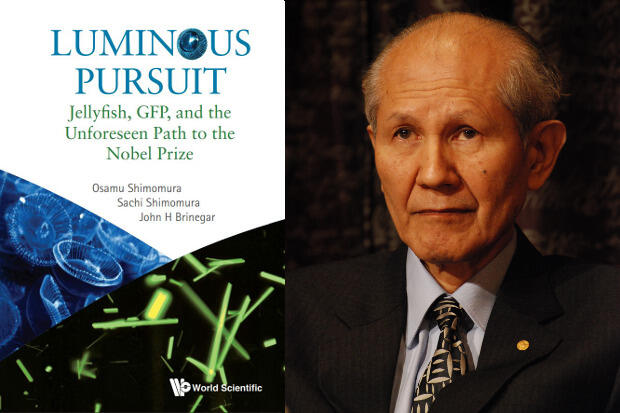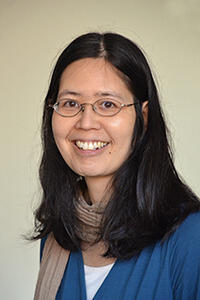
July 26, 2017
New book co-written by VCU English professors tells the story of Japanese scientist’s unexpected path to the Nobel Prize
Share this story
A new book co-written by Virginia Commonwealth University professors Sachi Shimomura, Ph.D., and John Brinegar, Ph.D., along with Shimomura’s father, Osamu Shimomura, Ph.D., tells the life story of the elder Shimomura, from his time growing up in wartime Japan and his eyewitness account of the atomic bombing of Nagasaki to his postwar research into jellyfish bioluminescence that ultimately earned him the Nobel Prize in Chemistry in 2008.
The book, “Luminous Pursuit: Jellyfish, GFP, and the Unforeseen Path to the Nobel Prize” (World Scientific 2017), narrates the life and scientific career of Osamu Shimomura, detailing his travels around the world to collect and research more than 15 bioluminescent species. He received the Nobel Prize for the discovery and development of Green Fluorescent Protein — which has become an important tool for studying the biological process in cells — as he was the first person to isolate GFP and the protein aequorin from the jellyfish Aequorea victoria in the early 1960s.

“My father has for some time been concerned about how much scientific research is driven increasingly by economics and practical applications, with the result that students of science are often being more and more narrowly trained,” said Sachi Shimomura, an associate professor and associate chair in the Department of English in the College of Humanities and Sciences.
“I hope readers will come to understand how important it was — and how important it is for the future of scientific progress — to be able to learn from whatever experiences one encounters, and to be willing to take risks by undertaking projects without an immediately visible payoff,” she said. “I hope they learn how much constant curiosity, questioning and observation matter, as the true grounds to a worthwhile education. So next time you see a firefly, or a glowing fish, think about how complicated the science behind it is!”

The project came about after Osamu Shimomura published an autobiography in Japanese after he received the Nobel Prize in Chemistry and a scientist expressed interested in translating some of it into English. Shimomura began thinking about writing a fuller autobiography in English, and eventually enlisted the help of his daughter and Brinegar, a teaching assistant professor in the Department of English.
“We were interested in having his whole story in English for our family to be able to read,” Sachi Shimomura said.
As they worked on the book, Sachi Shimomura was intrigued to find how her father’s story gave context to the family stories about Japan and his scientific discoveries she heard while growing up.
“I also found out for the first time all the details of how my mother, who was in Nagasaki at the time, survived the atomic bomb’s aftermath,” she added. “She had told stories about it during my childhood, so that it was all part of my consciousness as I grew up, but I had never encountered the full details of the story as an adult. So this book focuses on science, but my parents’ dedication to science came out of those dark times.
“My father hopes that his story will also make people think more about the reality of atomic and nuclear weapons, and the costs of war — and work to make science advance life, not death,” she said.
Subscribe for free to the VCU News email newsletter at http://newsletter.news.vcu.edu/ and receive a selection of stories, videos, photos, news clips and event listings in your inbox every Monday and Thursday during the academic year and every Thursday during the summer.
Subscribe to VCU News
Subscribe to VCU News at newsletter.vcu.edu and receive a selection of stories, videos, photos, news clips and event listings in your inbox.









